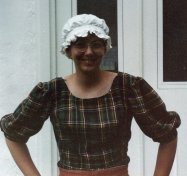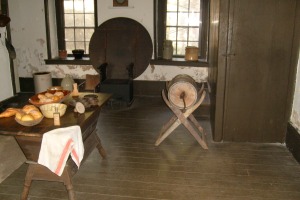Transportation Stations, Nebraska
Today is about travel…train travel; in particular, the moving of products around our country.
Our
destination to learn about trains? The Golden Spike Tower and Visitor
Center, a must see for train aficionados. The eight-story tower
overlooks the Bailey Yards of Union Pacific railroad.
The
yards comprise repair buildings, administrative offices, switching
yards, storage yards and hump tracks. Hump tracks are elevated tracks
where outgoing train cars are sorted electronically and sent down a hill
to the outgoing train they will
be attached to. The whole set up is fascinating to watch from the tower.
It’s like looking down on a child’s toy train diorama, but it’s real.
|
Eastbound yards. |
|
Repair facility. |
|
Looking east at admin building and corn maze. |
|
Stats |
|
Map of Bailey Yard |
|
Look at all those engines! |
From North Platte we
had a long travel day (just kidding) of 82 miles to Elm Creek, Nebraska
where we stayed at Sunny Meadows Campground (a Passport America
park). No “it” factor, just gravel pull-through sites.
Two
different people who worked at the campground told us they had free
wi-fi and it worked best in the sites next to the laundry. We had the
site adjacent to the laundry building and no wi-fi at all. False
advertising in my opinion.
We needed to do a couple loads of laundry so
at least we were close to that. If any of you plan on staying in Elm
Creek, we do not recommend Sunny Meadows. If you plan to use the showers
on site, I’d recommend making another plan. There is one shower in the
women’s room and one shower in the men’s room. You get to the restrooms
through the laundry room. The
restrooms/showers are old and dirty. To be specific, the bathrooms had
no soap, no paper towels, the sink had old toothpaste and soap bits in
it, the showers had cement floors, and the shower heads looked like they
had never been replaced. Yuck. The laundry room was neat and clean, however. (See below for a campground in the area we DO recommend.)
Since
we had a short travel day today, we had daylight left. We decided to
make use of it. We took the truck and drove to
Kearney, Nebraska, to see The Great Platte River Road Monument which
spans both lanes of I-80. I thought it was only a pretty bridge, but
come to find out it’s an attraction with two stories of history of the
Great Platte River Road. We arrived at 6:10 p.m. It had closed for the
day at 6:00 p.m., so we walked across the suspension bridge to view the
outdoor exhibits of an earthen house and a sod house. I was able to take
some pretty pictures in the light of the late afternoon sun.
|
The Great Platte River Road Monument. |
|
Artwork on top of the monument. |
|
Suspension bridge. |
|
Earthen house. |
|
Inside the earthen house–it’s a lot bigger than it looked from the outside. |
|
Bob at the sod house. |
When
we finished our walk around the grounds, we took a drive into the town
of Kearney and were amazed by how big it is. We drove and drove. At a
Booggarts grocery store, we stopped for a couple of items.
We
headed south to Ft. Kearny (pronounced Car-knee) State Historical Park.
It, too, was closed. We walked around the park in the faltering light.
After
our walk around the old fort parade grounds, we drove two miles down
the road and checked out Ft. Kearny State Park Campground. This is a
very nice campground with electrical hook-ups, water at the site, but no
sewer hook-ups. The park has about six small lakes and lots of trees. If we stayed in the area again, we would choose this campground.
So,
our day devoted to transportation came to an end as we transported
ourselves back to our campground. We started our laundry, then made
tostados for dinner, finished up the laundry and read for a bit before
snoozing.
Tomorrow will be another big travel day. We expect to be in San Antonio by Friday or Saturday.
Good night.














